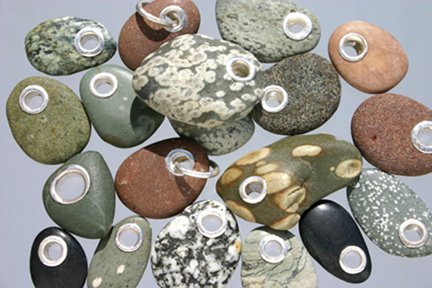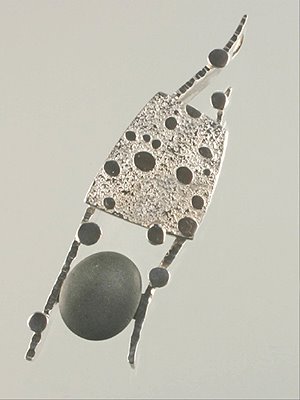It was 2002 and I was in the lovely
country of Italy with my boss Mr. Robert Mednikow and a small clan of
other employees from Mednikow Jewelers of Memphis, Tennessee. I was
the custom jewelry designer there and we were on a buying trip. Bob
(Mr. Mednikow) was a wonderful and gracious traveling companion for
the most part. He did like to have things his way but I guess that
was to be expected given his position. Anyway during the trip we
were seeing all the very latest jewelry fashions that the Italians
had to offer. As it turns out Bob had lots of connections at the
jewelry show and it seemed everybody knew him.
 One day he introduced me to Pippo
Perez, a flamboyant jewelry and watch designer. Bob and he were
taking about a new line of leather goods that Pippo was showing and
Bob was narrowing down his choose on an exotic purse for his wife, Betty. I was
distracted by Pippo's new watch line “Lucky Time” and was
galvanized by one wrist watch in particular. It was dramatic,
tailored and it had the most unusual leather band. The band was made
of polished stingray leather. I had never heard or seen such a
material. It was beautiful and filled with detail. A bit like
ostrich leather but on a much smaller scale. That night at dinner
Bob told me that he had bought that very watch and he wanted me to
have it. Wow that was cool ( I did mention that he could be
gracious, right?) and it was years before I saw any other pieces of
stingray leather, aside from Betty's purse. Yes, it was made of
stingray as well.
One day he introduced me to Pippo
Perez, a flamboyant jewelry and watch designer. Bob and he were
taking about a new line of leather goods that Pippo was showing and
Bob was narrowing down his choose on an exotic purse for his wife, Betty. I was
distracted by Pippo's new watch line “Lucky Time” and was
galvanized by one wrist watch in particular. It was dramatic,
tailored and it had the most unusual leather band. The band was made
of polished stingray leather. I had never heard or seen such a
material. It was beautiful and filled with detail. A bit like
ostrich leather but on a much smaller scale. That night at dinner
Bob told me that he had bought that very watch and he wanted me to
have it. Wow that was cool ( I did mention that he could be
gracious, right?) and it was years before I saw any other pieces of
stingray leather, aside from Betty's purse. Yes, it was made of
stingray as well.
I can testify that I am not gentle with
any of my jewelry. I guess it's because I can effect repairs myself
if any thing goes awry. Anyway, after all these years that stingray
strap looks about the way it did when I first put it on. The stuff
just wears great and ages gracefully.
Philip's son is Wyatt and he was to
have a cuff with a band's “glyph” on it as well. I had been
wondering what I was going to do to match the sexy coolness of
Philip's cuff of Mokume Gane. Of course you can see where this is
going. The stingray leather cuff with some sterling accents was
going to be a fairly straight forward project and it also solved the
problem of resizing the piece as Wyatt grew. It was also fortuitous
because Chloe's project was next and it was going to take
considerable time. Thank goodness stingray leather is available at
most leather shops these days, you can even order it from TandyLeather. I highly recommend that you seek out some of this material.
Wyatt's cuff should serve him well and it will easily adjust to fit
him as he grows.






















